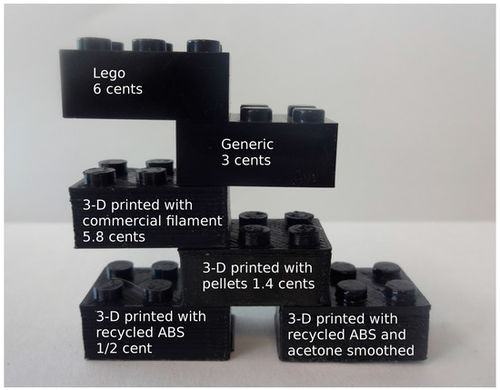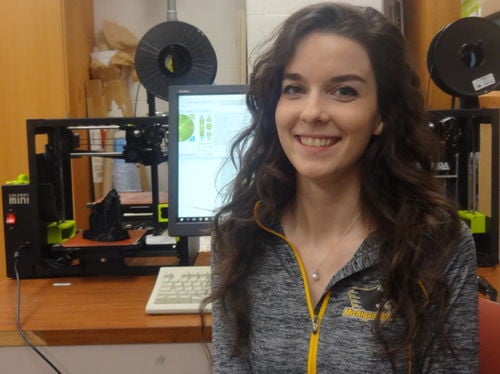J.M.Pearce (talk | contribs) mNo edit summary |
J.M.Pearce (talk | contribs) mNo edit summary |
||
| Line 3: | Line 3: | ||
[[category:MOST completed projects and publications]] | [[category:MOST completed projects and publications]] | ||
==Source== | ==Source== | ||
* Emily E. Petersen, Romain W. Kidd, Joshua M. Pearce, Impact of DIY Home Manufacturing with 3-D Printing on the Toy and Game Market. ''Technologies'' '''2017''', 5(3), 45; doi: 10.3390/technologies5030045 [open access] | * Emily E. Petersen, Romain W. Kidd, Joshua M. Pearce, Impact of DIY Home Manufacturing with 3-D Printing on the Toy and Game Market. ''Technologies'' '''2017''', 5(3), 45; doi: 10.3390/technologies5030045 [open access] | ||
| Line 35: | Line 28: | ||
== In the News == | == In the News == | ||
[[image:Emily-mini.jpg|right|500px]] | [[image:Emily-mini.jpg|right|500px]] | ||
{|style="border:1px solid #ffa508; background-color: #D0D0FFF; margin-left:.1em; margin-top:2px; -moz-border-radius:15px;" align="right" width="240px" | |||
!<big><big>Economic Advantage to Making Your Own Stuff with 3D Printing</big> | |||
|- | |||
|<center>{{#widget:YouTube|id=C8Wv3LCJcUE}} </center> | |||
|- | |||
|} | |||
Revision as of 11:25, 20 July 2017
Source
- Emily E. Petersen, Romain W. Kidd, Joshua M. Pearce, Impact of DIY Home Manufacturing with 3-D Printing on the Toy and Game Market. Technologies 2017, 5(3), 45; doi: 10.3390/technologies5030045 [open access]
Abstract

Through reduced 3-D printer cost, increased usability, and greater material selection, additive manufacturing has transitioned from business manufacturing to the average prosumer. This study serves as a representative model for the potential future of 3-D printing in the average American household by employing a printer operator who was relatively unfamiliar with 3-D printing and the 3-D design files of common items normally purchased by the average consumer. Twenty-six items were printed in thermoplastic and a cost analysis was performed through comparison to comparable, commercially available products at a low and high price range. When compared to the low-cost items, investment in a 3-D printer represented a return of investment of over 100% in five years. The simple payback time for the high-cost comparison was less than 6 months, and produced a 986% return. Thus, fully-assembled commercial open source 3-D printers can be highly profitable investments for American consumers. Finally, as a preliminary gauge of the effect that widespread prosumer use of 3-D printing might have on the economy, savings were calculated based on the items’ download rates from open repositories. Results indicate that printing these selected items have already saved prosumers over $4 million by substituting for purchases.
Keywords
distributed manufacturing; additive manufacturing; 3-D printing; consumer; economics; open-source; toy industry
See also
- Emergence of Home Manufacturing in the Developed World: Return on Investment for Open-Source 3-D Printers
- Life-cycle economic analysis of distributed manufacturing with open-source 3-D printers
- Quantifying the Value of Open Source Hardware Development
- Open-source, self-replicating 3-D printer factory for small-business manufacturing
- Distributed manufacturing with 3-D printing: a case study of recreational vehicle solar photovoltaic mounting systems
- Global value chains from a 3D printing perspective
In the News

| Economic Advantage to Making Your Own Stuff with 3D Printing |
|---|
Error in widget YouTube: Unable to load template 'wiki:YouTube' |

